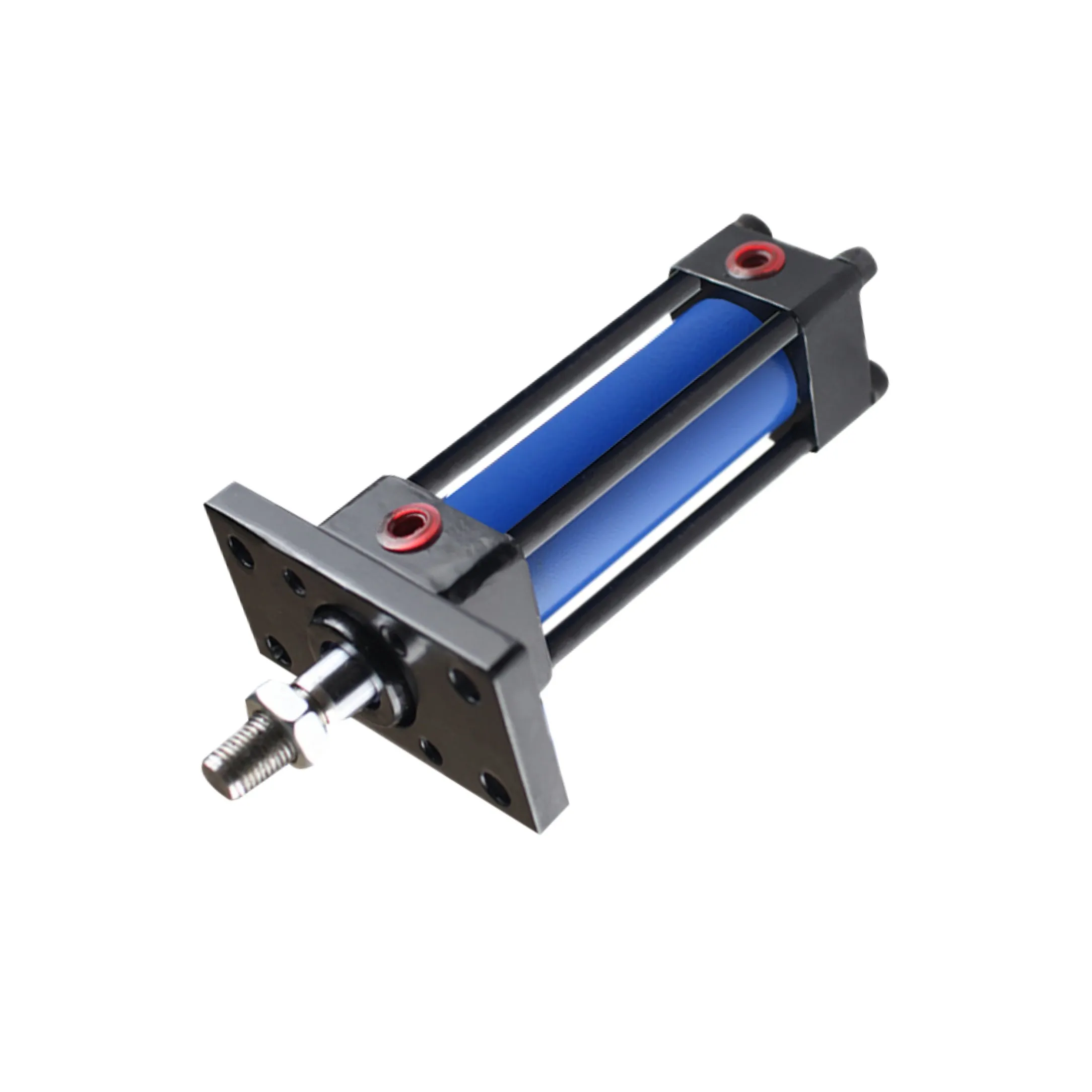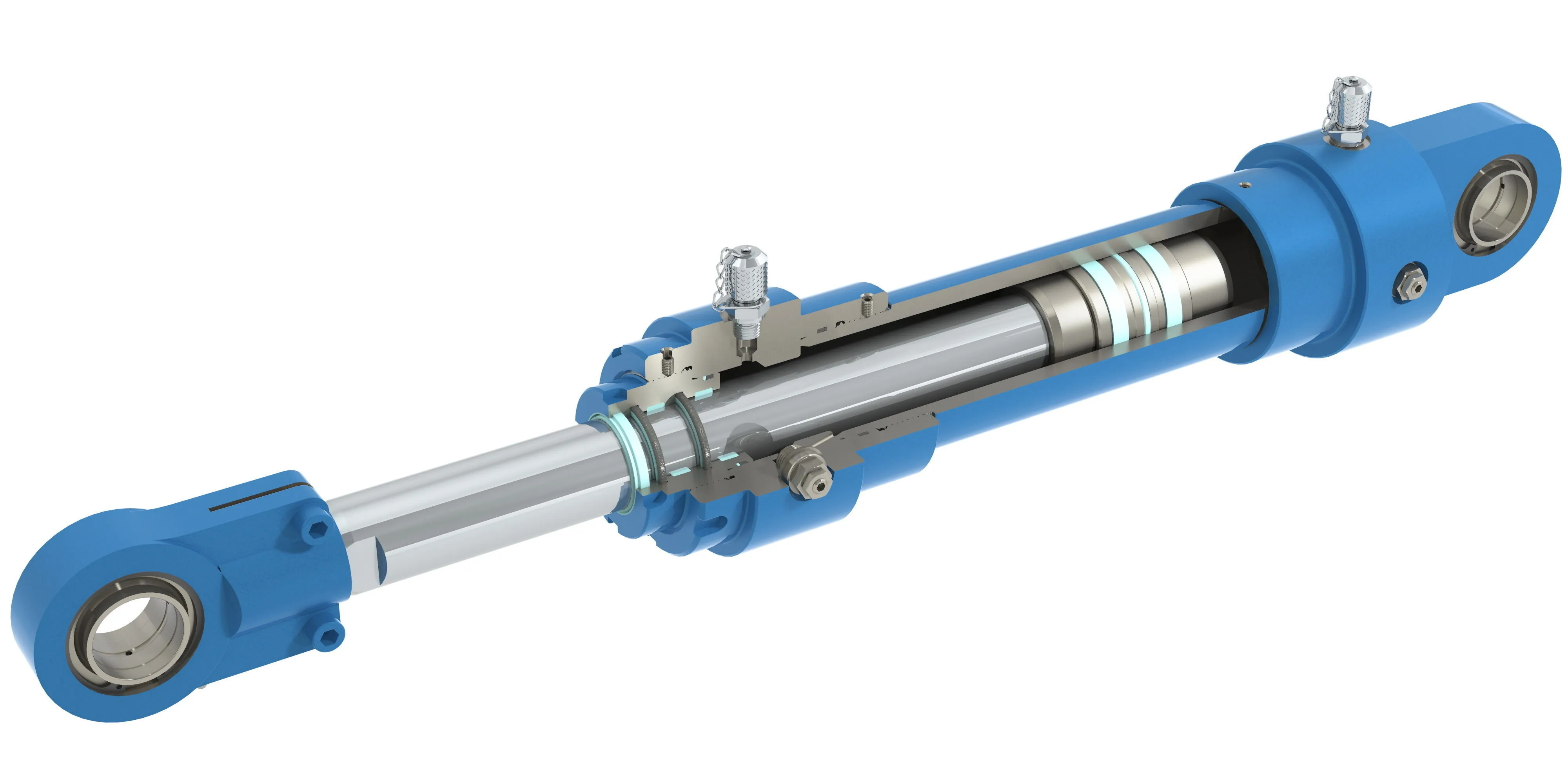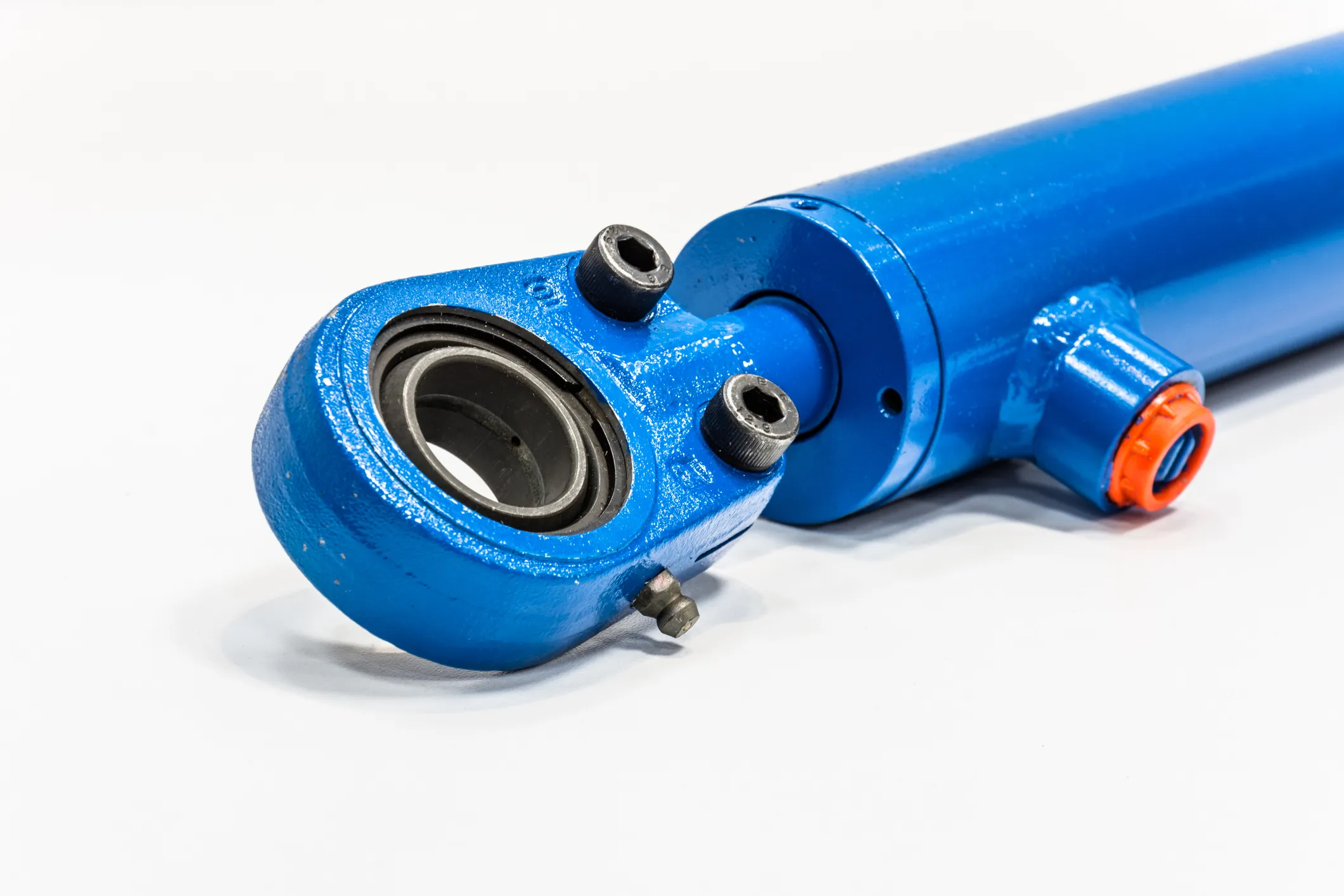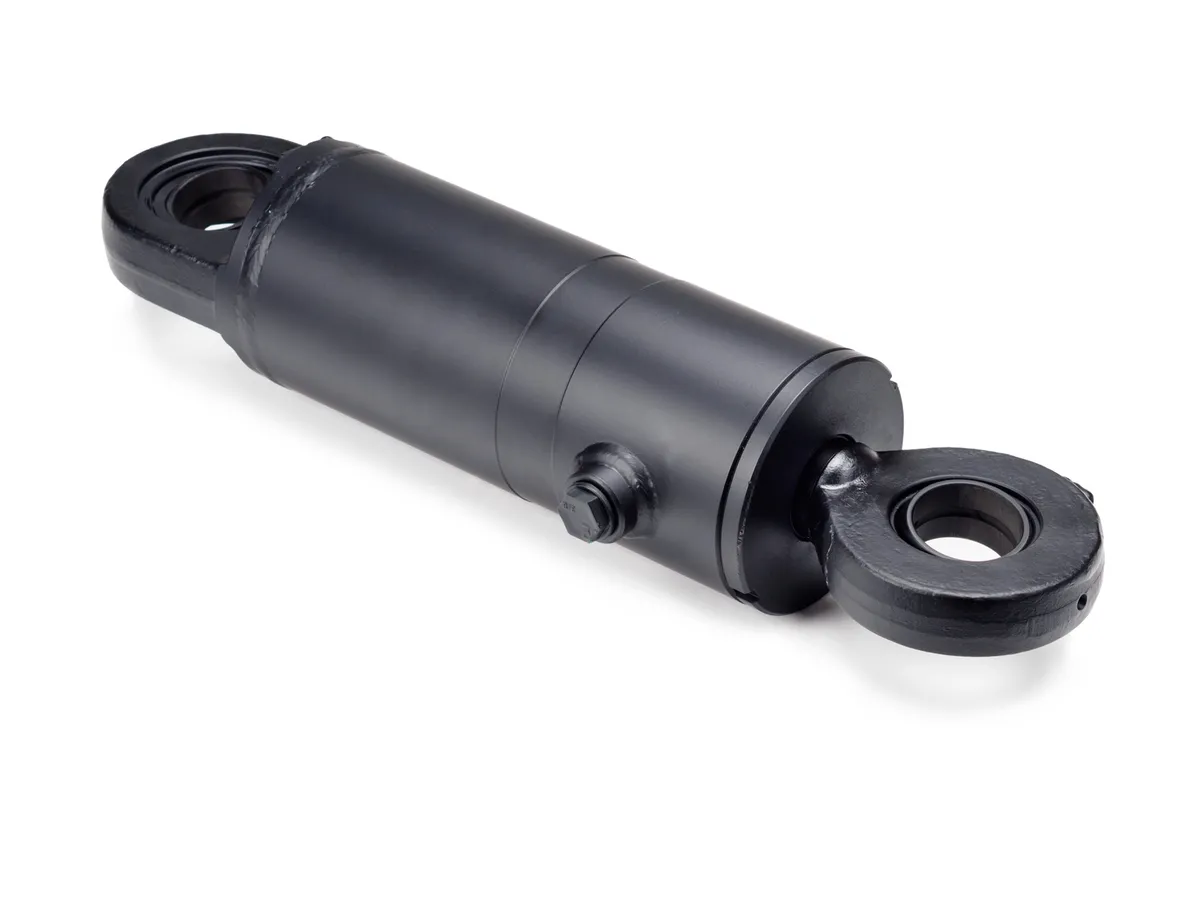Understanding Locking Single-Acting Hydraulic Cylinder
In the realm of hydraulic systems maintenance, the importance of utilizing a locking single-acting hydraulic cylinder cannot be overstated. This specialized component works under hydraulic pressure in one direction and boasts a locking function that prevents movement in the absence of pressure.
Design and Construction Characteristics
When delving into the design and construction of a locking single-acting hydraulic cylinder, one must pay close attention to its unique attributes.
Locking Mechanism – Safety
- The primary feature of this cylinder is its locking mechanism, which ensures the piston remains in a secure position even when hydraulic pressure is lost.
- This mechanism can take the form of a mechanical lock or a hydraulic lock, providing an added layer of safety.
Variety
- Customizable locking mechanisms cater to specific application needs, offering options like spring-loaded locking devices and pin locks.
- Various mechanical locks can be integrated to optimize performance based on the machinery requirements.
Compact Structure – Space Optimization
- Compact designs make these cylinders ideal for space-limited environments and allow for versatile usage across different equipment types.
- Precision manufacturing techniques ensure high-precision machining, promoting optimal fit and sealing to prevent leakage.
Working Principle
The operation of a locking single-acting hydraulic cylinder relies on the single-acting mechanism coupled with a robust locking feature.
Single-Acting Mechanism
Hydraulic oil is pumped into the chamber to extend the cylinder and push the piston outward, with the locking mechanism preventing retraction under load.
Locking Mechanism
Whether employing mechanical or hydraulic locks, the system ensures the load remains secure even in the absence of hydraulic pressure, enhancing overall safety.
Types and Configurations
There exist various types and configurations of locking single-acting hydraulic cylinders to suit diverse operational needs.
Split Introduction
Each type offers distinct advantages and applications, catering to specific requirements within different industries.
Benefits of Locking Single-Acting Hydraulic Cylinder
Embracing this specialized cylinder brings an array of benefits that elevate operational efficiency and safety.
Enhanced Security
The locking feature significantly reduces the risk of accidental retractions, ensuring a safer working environment for operators.
Reliability
Designed to withstand high loads and varying conditions, these cylinders deliver consistent performance and operational reliability.
Simplicity
Easy to operate and maintain, these cylinders offer user-friendly solutions for a wide range of applications, promoting ease of use.
Application Scenarios
Locking single-acting hydraulic cylinders find extensive utilization across different industries, each offering unique operational advantages.
Construction Equipment
Commonly used in cranes, hoists, and lifts to securely handle heavy loads and ensure stability during operations.
Manufacturing
Applied in presses to provide controlled force during material processing, enhancing precision and efficiency in manufacturing processes.
Transportation
Utilized in vehicle stabilizers and jacks to maintain safety during maintenance activities and ensure stability during transportation.
Design Considerations and Selection Criteria
When selecting a locking single-acting hydraulic cylinder, critical design considerations and selection criteria must be taken into account for optimal performance.
Exploring Bearing Capacity
Understanding the load-bearing capacity of the cylinder is crucial to ensure it can withstand the intended workload and operating conditions.
Sealing and Durability
Effective sealing mechanisms and durable construction materials are essential to prevent leaks and ensure long-term performance.

Safety and Maintainability
Prioritizing safety features and ease of maintenance enhances the overall reliability and longevity of the hydraulic system.

Sealing and Lubrication
Proper sealing and lubrication are pivotal for the optimal function and longevity of a locking single-acting hydraulic cylinder.
Seal Materials
Utilizing high-quality seals such as piston seals and rod seals made from wear-resistant materials ensures efficient operation and prevents leakage.
Lubrication Maintenance
Regularly filling the cylinder with the appropriate amount of hydraulic oil enhances lubrication, reducing friction and wear for extended component lifespan.
Regular Inspection and Preventive Maintenance
Implementing routine inspection and maintenance measures is essential to uphold the performance and longevity of locking single-acting hydraulic cylinders.
Inspection Protocols
Regularly inspecting the cylinder for wear, damage, and proper functioning helps identify potential issues early and prevent costly breakdowns.
Maintenance Procedures
Following recommended maintenance schedules and procedures ensures the cylinder operates optimally and minimizes the risk of unexpected failures.
Installation Guide
Proper installation of a locking single-acting hydraulic cylinder is paramount to ensure optimal performance and safety.
Correct Installation Process
Adhering to manufacturer guidelines, aligning components accurately, and securing the cylinder with appropriate mounting brackets are key steps in the installation process.
Maintenance Tasks
Executing regular maintenance tasks is crucial to prolong the service life and efficiency of locking single-acting hydraulic cylinders.
Regular Inspection
Periodically inspecting the cylinder for wear, leaks, and proper alignment helps identify issues early and prevent potential failures.
Proper Lubrication
Ensuring adequate lubrication of components reduces friction, wear, and extends the lifespan of the cylinder, enhancing overall performance.
Seal Replacement and Calibration

Replacing worn seals and calibrating the cylinder as needed maintains optimal functionality and prevents operational issues, ensuring reliable performance.
Safety Considerations and Environmental Factors
Prioritizing safety measures and considering environmental factors are essential when utilizing locking single-acting hydraulic cylinders.
Safety Measures
Implementing safety protocols, training operators on proper usage, and adhering to industry standards mitigate risks and ensure a safe working environment.
Fault Diagnosis and Common Problems
Understanding common issues and diagnosing faults promptly is crucial to maintaining the efficiency and reliability of locking single-acting hydraulic cylinders.
Troubleshooting Solutions
Providing troubleshooting tips, solutions, and preventive measures aids in identifying and rectifying problems efficiently, minimizing downtime and maximizing productivity.
Unit Power Considerations
Evaluating the unit power of a locking single-acting hydraulic cylinder is essential to gauge its performance and operational capabilities.
Influencing Factors
Factors like cylinder diameter, operating pressure, piston speed, and load conditions directly impact the unit power output and overall system efficiency.
Optimizing Hydraulic Power Unit
Optimizing the power unit of a locking single-acting hydraulic cylinder offers multiple advantages that enhance operational efficiency and reliability.
Efficiency Improvement
Maximizing power output reduces operation time, boosts production capacity, and streamlines workflow processes for increased efficiency.
Energy Saving
By optimizing design and operation, energy consumption is minimized, resulting in cost savings and sustainable operation over time.
Reliability Enhancement
Effective power management extends equipment lifespan, reduces failure rates, and ensures consistent performance, enhancing overall system reliability.
FAQs
How does the locking mechanism in a single-acting hydraulic cylinder work?
The locking mechanism in a single-acting cylinder prevents retraction under load by securing the piston in place when hydraulic pressure is lost.
What advantages do locking single-acting hydraulic cylinders offer over standard single-acting cylinders?
Locking single-acting cylinders provide enhanced security, reliability, and simplicity, making them ideal for applications requiring safety and precise control.
In what applications are locking single-acting hydraulic cylinders commonly used?
Locking single-acting cylinders find applications in construction equipment, manufacturing machinery, transportation systems, and aviation landing gear for safety and stability.
Long-Tail Keywords
Exploring long-tail keywords specific to locking single-acting hydraulic cylinders can provide valuable insights into niche applications and functionalities.
Long-Tail Keywords
1. “Hydraulic Cylinder Locking Mechanism”
2. “Single-Acting Cylinder Safety Features”
3. “Optimizing Locking Hydraulic Power Units”
Company Overview
Our company specializes in hydraulic cylinder replacement manufacturing, offering a comprehensive product line and serving as a prominent distributor in domestic and global markets.

Professional Services
With a focus on professional services, we deliver high-quality products, customized solutions, and exceptional customer support to meet diverse industry needs.
International Certification
Our commitment to international standards and certifications underscores our dedication to quality, safety, and reliability in all our products and services.
Customized Solutions
Providing customized solutions tailored to individual requirements ensures optimal performance, efficiency, and operational success for our clients.
Production Equipment
Equipped with state-of-the-art production facilities, we uphold stringent quality control measures and precision manufacturing processes to deliver superior hydraulic components.
After-Sales Service
Our after-sales service ensures ongoing support, maintenance assistance, and product guidance to enhance the longevity and performance of our hydraulic cylinder products.
Author: lyl
